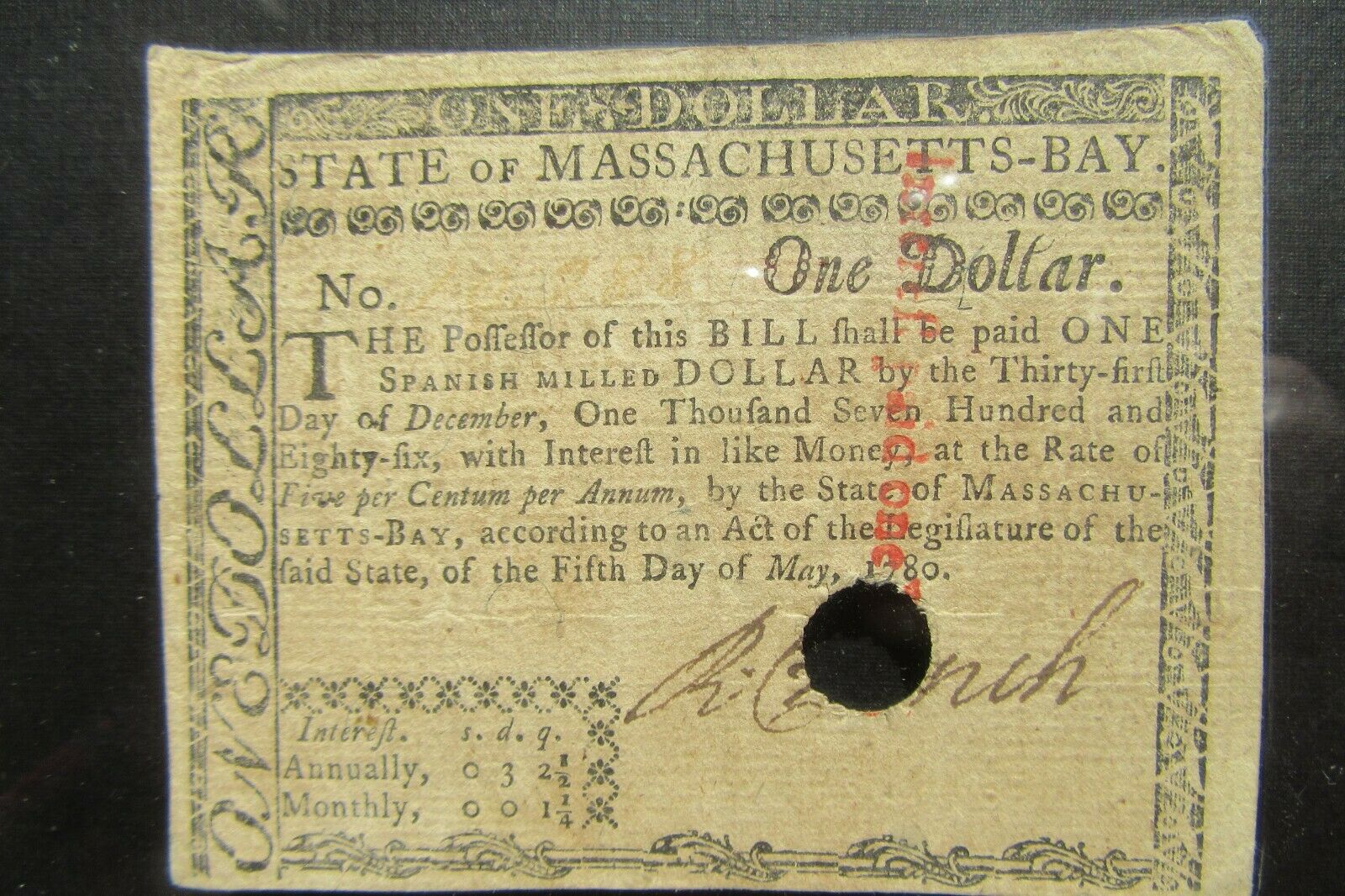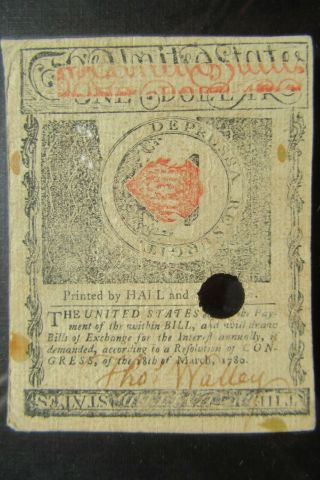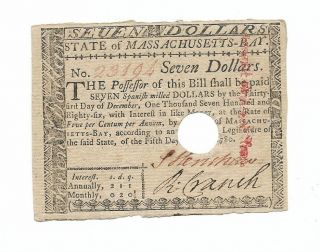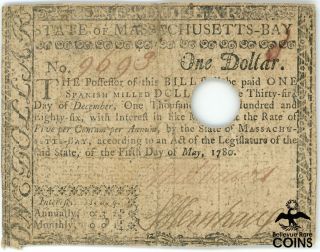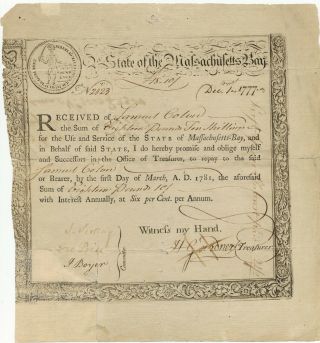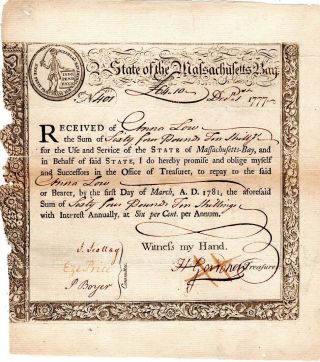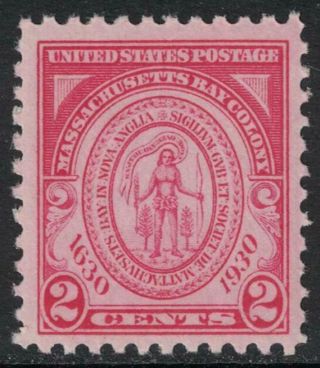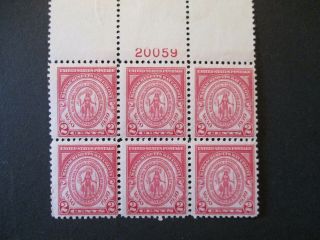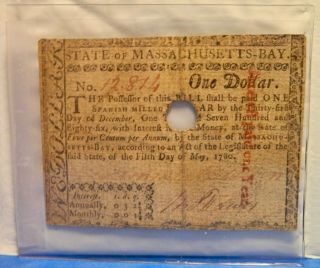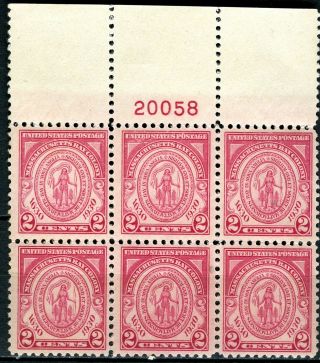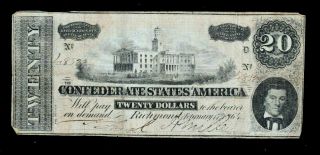RARE 1786 State Of Massachusetts - Bay COLONIAL CURRENCY 1 Dollar
Item History & Price
| Reference Number: Avaluer:20226933 | Country/Region of Manufacture: United States |
| Circulated/Uncirculated: Circulated | Type: Banknotes |
RARE 1786 State ofMassachusetts-Bay COLONIAL CURRENCY 1 dollar Colonial currency - Commodity money wasused when cash (coinsand paper money) was scarce. Cash in the colonies was denominated in pounds, shillings, and pence. The value varied from colony to colony; a Massachusetts pound, for example, was not equivalent to a Pennsylvania pound. The pound wasthe currency of the Commonwealth of Massachusetts and its colonialpredecessors u...ntil 1793. Like the British pound sterling ofthat era, the Massachusetts pound was subdivided into 20 shillings, each of 12 pence, but the Massachusetts and British pounds were not equivalent in value. Britishand other foreign coins were widely circulated in Massachusetts, supplementedby locally produced coins between about 1652 and 1682 and by local paper moneyfrom 1690.The paper money issued incolonial Massachusetts was denominated in pounds, shillings, and pence.Initially, six shillings were equal to one Spanish dollar.After years of high inflation, in 1749 Massachusetts withdrew its paper moneyfrom circulation and returned to specie.Massachusetts once againbegan issuing paper money after the American Revolutionary War began in 1775. Thestate currency depreciated greatlyand was replaced by the U.S. dollar in1793.All colonial pounds wereof less value than the British pound sterling. The coins in circulation in the colonies were most often of Spanish andPortuguese origin.[2] Theprevalence of the Spanish dollar inthe colonies led to the money of the United States being denominated in dollarsrather than pounds. One by one, colonies began to issue their own paper moneyto serve as a convenient medium of exchange.In 1690, the Province of Massachusetts Bay created "thefirst authorized paper money issued by any government in the Western World”. Thispaper money was issued to pay for a military expedition during King William's War.Other colonies followed the example of Massachusetts Bay by issuing their own papercurrency in subsequent military conflicts. The paper bills issued by thecolonies were known as "bills of credit".Bills of credit were usually fiat money:they could not be exchanged for a fixed amount of gold or silver coins upondemand. Bills of credit were usually issued by colonial governments to paydebts. The governments would then retire the currency by accepting the billsfor payment of taxes. When colonial governments issued too many bills of creditor failed to tax them out of circulation, inflation resulted.This happened especially in New England andthe southern colonies, which, unlike the Middle Colonies, were frequently at war. Pennsylvania, however, was responsible in notissuing too much currency and it remains a prime example in history as asuccessful government-managed monetary system Pennsylvania's papercurrency, secured by land, was said tohave generally maintained its value against gold from 1723 until the Revolutionbroke out in 1775. Another Currency Act, in 1764, extended the restrictions to the colonies south of New England. Unlike theearlier act, this act did not prohibit the colonies in question from issuingpaper money but it forbade them to designate their currency as legal tender forpublic or private debts. That prohibition created tension between the coloniesand the mother country and has sometimes been seen as a contributing factor inthe coming of the American Revolution.After much lobbying, Parliament amended the act in 1773, permitting thecolonies to issue paper currency as legal tender for public debts. Shortlythereafter, some colonies once again began issuing paper money. When the American Revolutionary War began in 1775, allof the rebel colonies, soon to be independent states, issued paper money to payfor military expenses.
Please see enlarged photos and feel free to contact me with anyquestions or concerns. Payment by PayPal only. Tracking number with shipping.
Please see enlarged photos and feel free to contact me with anyquestions or concerns. Payment by PayPal only. Tracking number with shipping.



